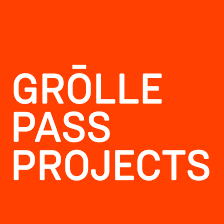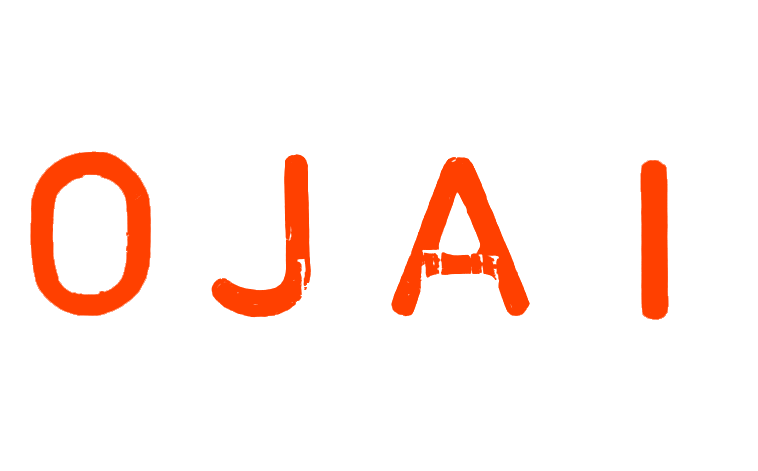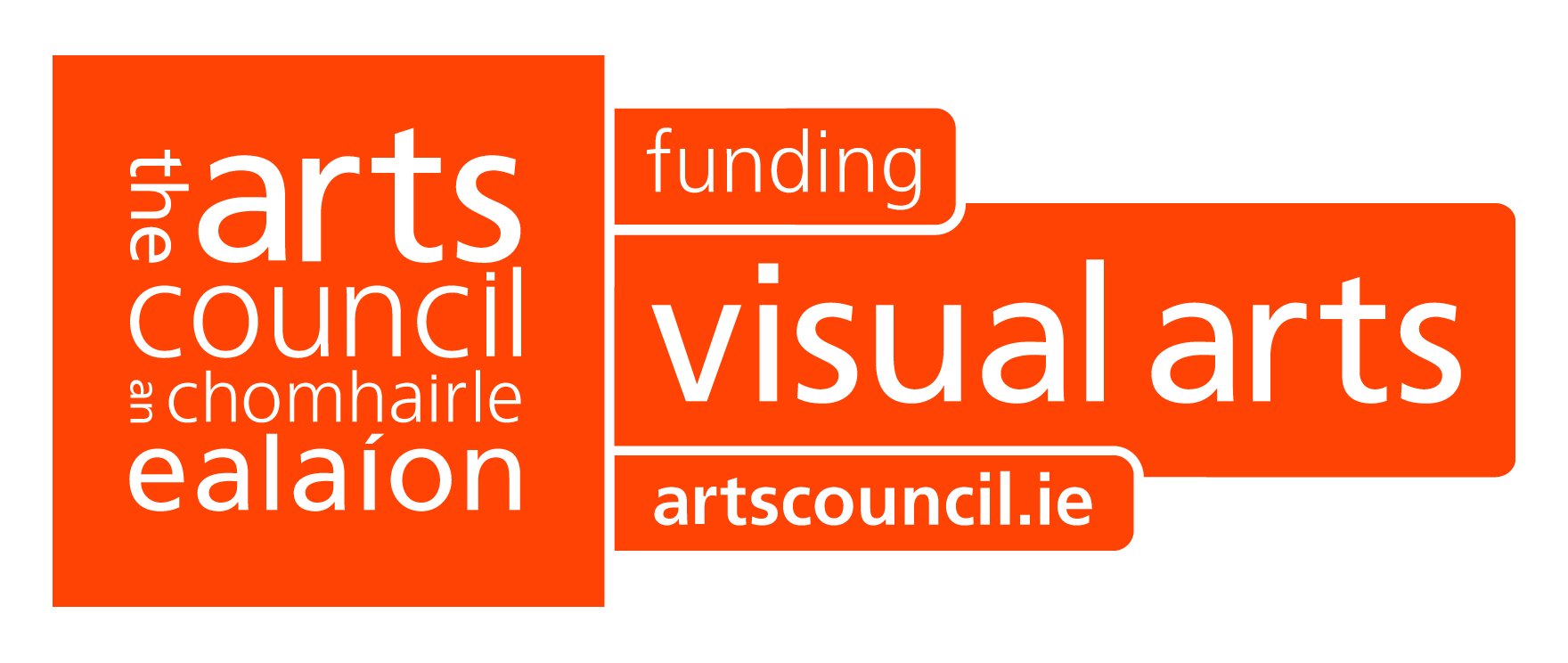The European Conference of Institutional Ideators (ECII) will take place at Grölle pass:projects in the German city of Wuppertal over the weekend of October 26th and 27th, 2019. ECII is being convened by The Office for Joint Administrative Intelligence (OJAI). The principal inquiry of the conference is SELF-INSTITUTIONALISATION AS ARTISTIC STRATEGY. OJAI has invited a carefully selected line up of artistic practices that appropriate institutional identities, processes and nomenclatures as a way of producing. ECII is concerned with questions related to the motivation, methodology and critical efficacy of this kind of practice. The program happens over two days of lectures, performances, screenings, concerts and field trips culminating in a plenary session – a round table discussion moderated by Joseph Noonan Ganley. The goal of ECII is to foster interaction and knowledge sharing between the participant practices and to establish provenance and lexicon for the phenomenon of self-institutionalisation. The conference will be accompanied by a self-institutionalisation handbook, a collaboration between OJAI and Zero-Desk featuring an essay by Pádraic E. Moore.
Die European Conference for Institutional Ideators (ECII) findet am 26. und 27. Oktober 2019 in der Galerie Grölle in Wuppertal statt. Die ECII wird vom Office for Joint Administrative Intelligence (O.J.A.I.) veranstaltet mit dem Thema der Selbstinstitutionalisierung als künstlerische Strategie. Das O.J.A.I. hat dazu eine Reihe von Künstlern ausgewählt, deren künstlerische Praxis sich Konzept, Arbeitsweise und Fachsprache von Institutionen angeeignet hat. ECII dreht sich um Fragen der Motivation, Methodik und der kritischen Wirkung dieser Art von künstlerischer Arbeit. Das zweitägige Programm besteht aus Performance, Wort-und Film-Vorträgen, einer Exkursion und einem Konzert. Den Abschluss bildet eine Runder-Tisch- Diskussion, moderiert von Joseph Noonan-Ganley. Das Ziel der Konferenz ist, Interaktion und Austausch zwischen den verschiedenen Teilnehmern zu fördern, Konzepte, Ursprung und Spezialvokabular dieser Praktik zu etablieren und der Öffentlichkeit näher zu bringen. ECII wird begleitet von einem Handbuch der Selbst-Institutionalisierung in Zusammenarbeit zwischen Zero-Desk, Antwerp, und dem O.J.A.I. und stellt einen Essay von Padraic E. Moore vor.
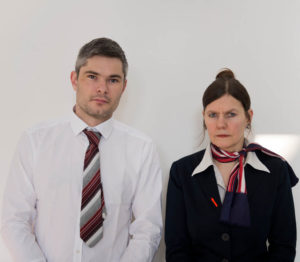
Chris Dreier (right)
Director for Financial Research and Systemic Risk
Office for Joint Administrative Intelligence (Berlin)
m: 0049 1637041989
w: chrisdreier@posteo.de
Gary Farrelly (left)
Director for Self-Inventory and Political Ideation
Office for Joint Administrative Intelligence (Brussels)
m: 0032 (4) 79035060
w: garyfarrelly@hotmail.fr
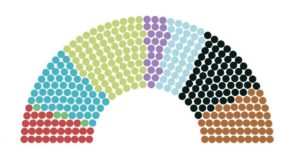
Saturday, 26 October (day 1)
14:00 Inauguration of the space
14:15 Welcome address and publication
14:25 Self Luminous Society and That Might Be Right
15:25 Padraic E Moore (part 1)
16:00 Coffee break16:15 Padraic E Moore (part 2)
16:50 Vanja Smiljanic, Minister of Cosmic People for the countries of Ex-Yugoslavia, Portugal and former Portuguese colonies
17:30 Short break17:45 ENCORE
18:35 Break for dinner20:00 Gesellschaft zur Emanzipation des Samples G.E.S (Jan Jelinek concert)
20:45 DJ More Moore More
Sunday, 27 October (day 2)
12:00 Assembly
12:15 Department of Ultimology
13:00 Julia Zinnbauer
13:45 Coffee break
14:00 T.A.L.O.S
14:45 Office for Joint Administrative Intelligence (excursion)
17:00 Plenary Session
19:00 Dinner and drinks
Handbook by Zero-Desk
Scenography by Parasite 2.0
Website by Tea Palmelund
The first Department of Ultimology was established by Fiona Hallinan and Kate Strain in January 2016, at Trinity College Dublin. A nascent discipline, Ultimology is the study of that which is dead or dying in a series or process. When applied across academic areas of study, it becomes the study of extinct or endangered subjects, theories, and tools of learning. Ultimology responds to a contemporary environment of anxiety around endings; a time of apocalyptic climate events and turbulent political change, threats of resurgent populism, depleted resources, rapid obsolescence and technological changes that are shifting society. The Department of Ultimology is part of the Orthogonal Methods Group (OMG), a research group based at CONNECT, the Science Foundation Ireland Research Centre for Future Networks and Communications. OMG is a research platform within CONNECT that works in critical and creative relation/tension with technology. Working through artistic methodologies, they utilise Ultimology as a tool for critical reflection by engineers working in cutting edge technology, and as a means for those outside that sphere to gain insight into complex subjects.
Fiona Hallinan is artist and researcher for the Department of Ultimology. Based in Brussels, she conducts interviews, organises events and commissions, researches and writes. She is interested in thresholds, the moment of entering a different state, or ‘inducing the uncanny’ (Jalal Toufic). She enacts this theme through gestures of hospitality, instigating new encounters between individuals and things. Her work has been shown at Kerlin Gallery, IMMA, Mother’s Tankstation and Brown University. She is currently a member of the Science Gallery Dublin Leonardo Group and is developing projects for Fingal Arts and Grazer Kunstverein. She is a graduate of History of Art and Architecture, at Trinity College Dublin and a member of the Orthogonal Methods Group (OMG), a research group based at CONNECT, the Science Foundation Ireland Research Centre.
Kate Strain is a curator researching performativity in contemporary visual arts practice. She is artistic director of Grazer Kunstverein, Austria and co-founder of the Department of Ultimology. She was acting curator at Project Arts Centre, Dublin 2014-15; Curator in Residence at Cow House StudiosWexford 2016; and Curator in Residence at CONNECT Centre for Future Networks and Communications, Trinity College Dublin 2017. Ongoing curatorial projects include online research and commissioning body The Centre For Dying On Stage and the paired curatorial practice with Rachael Gilbourne RGKSKSRG. She is a graduate of History of Art and Architecture, at Trinity College Dublin and a member of the Orthogonal Methods Group (OMG), a research group based at CONNECT, the Science Foundation Ireland Research Centre.
As co-initiator (with Tea Palmelund) of the project ISITDARK?- a research project about the transgender speedcore producer Liza’n’Eliaz- Merle Vorwald established the use of the HQ for the collective ENCORE. The project was realised over the summer in Antwerpen, with the initiators as main representatives on the site. In the first instance the HQ structure gave possibility to the representatives to communicate with the rest of the collectives ENCORE + SEXES with whom the project was executed. Shortly after it was installed, it evolved from a communication structure to the core of the project. It shaped physically in form of a temporal office structure and digitally in form of a archive and log platform. It was the core from which each individual or collective entity within the project could operate. The HQ became a fluid archival structure, loosely orientated on the concept of living archives. The use of the HQ also stemmed from former projects of ENCORE that were initiated by the artist Henrike Naumann. The use of this method will be explored further in future projects.
Merle Vorwald works as a set designer for movies + artist. She is based in Berlin and Brussels. Her background are studies in Architecture (UdK Berlin), she holds a diploma in Set Design (filmuniversity Babelsberg) and an MA in Set Design (SCAD). She is a member of the hardcore electronic music collective ENCORE and besides her practice as set designer for movies often collaborates with artists on their videos works. Within her work she explores how to translate complex political, historical or emotional contexts into fiction. She uses her fascination for materials that reflect on over-productivity of late consumer societies. It is the shine, the absurdity, the colourfulness, the abject hysteria of cheap domestic, of manufactured construction materials that are creating context. Her work is always based on collaborative structures and the redefinition of them.
Gesellschaft zur Emanzipation des Samples G.E.S.(Society for the Emancipation of the Sample) is not an official entity, but rather an association without membership or manifestation committed to one primary and pragmatic notion: financial backing and legal support in case of active breaches of copyright – the process of sampling.
Jan Jelinek is a musician, producer and remixer since 1998. His work deals with the transformation of sounds, translating source materials from popular music into abstract, reduced textures. Bypassing traditional musical instruments, he constructs collages using tiny sound fragments from a wide variety of recording devices: tape recorders, digital samplers, media players and the like. The recordings are processed into repetitive loops that boil the original down to its essentials, the source material becoming indecipherable in most cases. In his current live performances, Jelinek weaves diverse sound materials into intense drone collages and soundscapes.
Since 2010 Vanja Smiljanic has been working about and with Cosmic People, an internet based New Religious Movement originating in the Czech Republic. The focus of her interest lays in their online archive called “Library of Light”, an immense online database, made up of a broad spectrum of appropriated documents. Since 2013 Smiljanic has been translating text-based documents from the English section of the archive into Portuguese and Serbian, her two mother tongues. This contract led her to self-proclaim herself as a Minister of Cosmic People for the countries of Ex-Yugoslavia, Portugal and former Portuguese colonies. She has also created role of and fulfils the function of Senior Architect of the archive. Throughout the process of translation she also started slightly transforming the documents. Therefore through time she stopped seeing herself only as lubricator of their ideological apparatus but – by reshaping the documents of the archive – she started creating new extensions of their religious body.
Vanja Smiljanić (Belgrade, RS 1986) is a visual and performance artist living and working in Cologne. Smiljanić’s focus is in interdisciplinary projects and her research lies in cross methods within the fields of visual arts, video and performance. In her practice, she often utilizes the model of performance-lecture as a way to bridge fictitious and experiential universes, comprising technical apparatus, diagrams and sci-fi povera sculptures. Connecting otherwise unparalleled reality systems, Vanja’s work attests the foundation of ideologies as alienated regimes, recurring to her own body as a vessel for narration, often shifting between the position of oracle and storyteller.
The Office for Joint Administrative Intelligence was founded in 2015 by Chris Dreier and Gary Farrelly and is headquartered in Berlin and Brussels. OJAI research and production is focused on power structures embedded in the built environment and the agency of the self in history’s bigger narrative. Other recurring areas of exploration by the practice include language, disasters, economics and conspiracy theory. The project has its origins in written correspondence between Dreier and Farrelly and mail remains central to the practice. OJAI production manifests as performances, installations, field trips, publications, videos and a radio show. OJAI exhibitions are temporary office spaces that function as sites of display, collaboration and work. The Office for Joint Administrative Intelligence has presented work at Marres – Center for Contemporary Culture (Maastricht), ISELP- Institut Superieur pour l’Étude du Langage Plastique (Brussels), Damien & The Love Guru (Brussels), AIR Antwerpen (Antwerp), Gold + Beton (Cologne), Groelle Pass projects (Wuppertal), Laura Mars Gallery (Berlin) and 500X (Dallas).
Chris Dreier (1961), Director for Finance and Systemic Risk, OJAI NORD comes from Wuppertal and is based in Berlin. Dreier studied Visual Communications at Berlin’s University of Art (UDK). In the nineteen eighties she was a member of experimental music group Die Tödliche Doris. She continues to pursue sonic research with band projects Burqamachines with Ursula Döbereiner and MK/CT with Tim Loehde. In 2017 she took part in an artist exchange program between Berlin and the Ukrainian city of Lviv by the Horizon Foundation. Her visual artwork has been exhibited at The Museum of Contemporary Art (Wroclaw, Poland), New Mexico History Museum (Santa Fe), Center for Contemporary Art (Brest, France), 500X Gallery (Dallas) and the National Media Museum (Bradford). She has instructed workshops based on her practice at Goethe Institut fürKunstpädagogik, University of Frankfurt/Main.
Gary Farrelly (1983), Director for Heritage and Self-Inventory and Sub-Officer for Political Ideation OJAI SUD is an Irish artist based in Brussels. His work encompasses installation, video, performance and postal correspondence. Farrelly received his BA from the National College of Art and Design in Dublin (2006) and his MFA from LUCA School of the Arts in Belgium (2017) Much of Farrelly’s practice happens under the banner of Office for Joint Administrative Intelligence (OJAI) which he cofounded with Chris Dreier. Between 2013 and 2017 he collaborated with Oisin Byrne to create a feature film called Glue which is currently on an institutional screening tour of Europe. He has participated in residency programmes at AIR Antwerpen, Gropiusstadt Pilotprojekt, TAMAT and Central Trak University of Texas artist residency. His works have been screened and exhibited in a number of institutional contexts including Salzburger Kunstverein, Goldsmiths Center for Contemporary Art (London) and The Museum of Contemporary Art (MSURS) in Banja Luka (Bosnia and Herzegovina).
OJAI has commissioned Parasite 2.0 to design and produce the spatial setting that will accompany the ECII conference and the accompanying exhibition at GRÖLLE pass:projects. Parasite 2.0 is a studio for research, architecture and design based between Milan and Brussels. The practice was founded in 2010 as an independent and subversive research unit, a space of expression parallel to the academic Politecnico di Milano. They investigate the status of human habitats, acting within a hybrid of architecture, design and art. With an approach that touches radical pedagogy experiences, Parasite 2.0 works on spatial alteration, through the development of tools for the collective creation of possible habitats. In occasion of ECII Conference Parasite 2.0 have worked on the design of an environment that looks at the global standardization of institutional and corporate office spaces.
Parasite 2.0 are Stefano Colombo, Vedano al Lambro (MB), 1989; Eugenio Cosentino, Luino (VA), 1989; Luca Marullo, Catania, 1989. They are based in Milan and Brussels. They have worked and collaborated with ar\ge Kunst (Bozen, 2019); Damien and The Love Guru (Brussels, 2019); MAMbo Museo d’Arte Moderna in Bologna (2018); Terraforma Festival (Milan, 2017 and 2018); domesti.city (New York, 2018); 501(c)3 Foundation (Los Angeles, 2017); Marres (Maastricht, 2017); XX Chilean Architecture Biennale (Valparaiso, 2017); Venice Architecture Biennale (2012, 2014 and 2018) and the Shenzhen Architecture Biennale (2015), among others. They have led didactic activity at the Piet Zwart Institute in Rotterdam, Faculté d’architecture de l’université libre de Bruxelles, Design Academy Eindhoven and Politecnico di Milano. They taught at NABA Nuova Accademia Belle Arti Milano, and since 2016 they have been regularly teaching at MADE Program-Accademia di Belle Arti R. Gagliardi in Syracuse, Italy.
Parasite 2.0 was awarded Young Architect Program MAXXI in 2016. They are artist in residence at Jan Van Eyck Academie and mentee at Forecast for the 2019 program. Parasite 2.0 are represented by Operativa Arte Contemporanea Gallery and Galleria Corraini Arte Contemporanea.
The Self Luminous Society is a group of linguistic-metaphysic-mystical-lunatics. In short, we like to play with words and believe that through word play we can reach the divine with a transcendental state of mind. We practice Econosmics (Cosmic Economics), which could be understood as an alternative logic or lateral thinking approach to the production, distribution, and consumption of art. An example is found in the statement: “Don’t work for art, let art work for you”. We are not a gallery in the typical sense, but in the etymological sense. We are a passageway through the reality into a parallel alter-ego-gallery. We are southern sales associates at your service.
The aesthetic that our organization uses is a revival of “Cosmic Cowboy”, a counter-culture art and music movement that took place in Texas in the 1970s. It combined the imagery and clichés of the country cowboy with an experimental, progressive, and psychedelic twist.
SLS was founded in 2016 by Slim Denken (The Cosmic Cowboy) and then joined by Hayne E. Day (The Conscious Caballero) and Benny Snouta (The Concept Conspirator). SLS is nomadic, traveling around the world developing products and systems, partnering with various groups and institutions. We use a cooperative financial structure where profits are divided 50% for the artist, 20% split amongst all of the other artists of SLS, and 30% given to SLS to fund production costs and overhead. We have made presentations and conceptual sales workshops at various locations such as: Poppositions art fair (Brussels, BE), Bonington Gallery (Nottingham, UK), Artefiera (Bologna, IT), The Community (Paris, FR), Galerie Mieke van Schaijk (Den Bosch,
NL), and Jan van Eyck Academie (Maastricht, NL). Our organization takes its name from the poem, “God is Man Made” by John Giorno.
T.A.L.O.S. is an agency based in Brussels and created in 2017 by Pierre-Philippe Duchâtelet, Deborah Levy, Lionel Maes, and Antoine Wang. Its main objective is to investigate the world of anti-terrorist security with the aim of rendering some specific situations tangible. In order to do so, the agency gathers documents produced by different actors involved in those situations and subjects them to transformations, in the sense of modifying their form. From a certain point up to another, those transformations produce a new kind of attention on the documents, thus enabling a renewed capture. The gradual accumulation of the transformed documents produced during the course of the research constitute the current archives of the agency. T.A.L.O.S. is supported by Art/Recherche (A/R) and Ecole de Recherche Graphique (ERG). T.A.L.O.S will be represented at ECII2019 by Deborah Levy
Pierre-Philippe Duchâtelet is a designer and researcher. He co-founded the graphic design studio La Villa Hermosa. He teaches at Ecole de Recherche Graphique in Brussels, where he coordinates the master called “Design et politique du multiple”
Deborah Levy is an architect and researcher. She co-founded orthodoxe and Le Laboratoire. She teaches architecture in the Faculty of Architecture La Cambre Horta of the Free University of Brussels (ULB)
Lionel Maes is an artist, graphic designer and programmer. He co-founded the graphic design studio La Villa Hermosa. He teaches “pratiques numériques” at Ecole de Recherche Graphique in Brussels
Antoine Wang is an architect and researcher. He co-founded orthodoxe and Le Laboratoire. He teaches architecture in the Faculty of Architecture of the University of Liège
That Might Be Right is an artistic and socially engaged organisation based in Brussels dedicated to (re)searching, developing and supporting alternatives to the present. Through a practice of assembly we attempt to bring cultural practitioners together. Indeed that something might be right already implies that there are multiple ways to see the things around us and give significance to them. Actively investigating and discussing these alternative views and ways of doing will already change both ourselves and our surroundings. By loosely weaving together a plurality of views and voices we hope to bring about a community of cultural practitioners that takes the means of mediation in their own hands and therefore is more autonomous from State, institutions, market, and the 1%. As such the goal of our actions is to provide a supportive framework to the process of sharing, experiencing, and discussing works. In short, That Might Be Right attempts to reconfigure the politics of making art and alternative forms of production and presentation. TMBR will be represented at ECII2019 by Paoletta Holst and Rob Ritzen.
Paoletta Holst works as an artist, architectural researcher and writer. Her practice operates at the intersection of different disciplines to investigate the spatial and political dimension of art, architecture and the urban environment. She is interested in the influence of formal spatial/political power structures on our living environment, and in the informal counter strategies people create to deal with them. In 2016/2017 she worked as a Jan van Eyck participant on Grand Tour Europa, an artistic research project regarding the spatial understanding of tourism and migration in the context of the politics of cultural identity in the European Union. Currently she is working on Colonial Traces, a project around Dutch colonial architecture in Indonesia. She also teaches history and theory of architecture at the Academy of Architecture in the Netherlands and works as an editor for Archined. Together with Rob Ritzen she initiated That Might Be Right.
Rob Ritzen works as a curator with a background in philosophy, museum studies, art and architectural history. His curatorial practice is focused on self-organised and co-operative formats in close association with cultural practitioners — consciously positioned on the margin of established institutions and outside of market oriented spaces, but in the middle of communities of cultural practitioners. He is the artistic coordinator of City3 and an associate researcher at A.PASS institute for artistic research. Together with Paoletta Holst he initiated That Might Be Right.
OJAI has commissioned Zero-Desk to design and produce the official publication that will accompany the ECII conference. Zero-Desk is a small, independent design studio focusing on printed matter and site-specific installations. Working collaboratively with commissions from patrons in the fields of academie, art, architecture, film, furniture and publishing. The studio’s working method is based on collaboration and research of how to activate situations in order to create a platform for various kinds of communicative experiences. This enables the work to set up conditions where a process of working allows for continuous reconfigurations of places, histories and publics. Zero-Desk has recently started a platform for publishing within art, design and theory. Zero-Desk Editions projects are primarly with artists, designers and theorist who are examining social and political issues, histories, to change/reflect on perspectives or give directions to our view on the structures that surround us.
Carl Haase (b. 1977) is a research-based designer, writer and publisher producing work that bridges historical, social and at times political issues initialising archival, documentarian and participatory approaches. His work incorporates a collaborative practice in order to create a broad perspective. Within this collaborative approach he has worked with historians, photographers, designers and academics to create work that reevaluates the perceived history. This practice has been adapted into the publishing platform of Zero-Desk in 2014. He is currently a PhD candidate with ARIA Antwerpen, earned an MA from Sint-Lucas in Art Design and Research Antwerpen 2017 and from KASK Conservatorium in Graphic Design 2016 Gent, a former researcher at the Jan van Eyck Academie 2013–2015 focusing on our shared designed surroundings and the impact they have on our daily lives and a BFA from the Maine College of Art 2001.
OJAI is delighted to announce that Joseph Noonan Ganley will be the official moderator of ECII2019. He will superintend the plenary roundtable section of the program.
Joseph Noonan–Ganley b.1987 is an Irish artist based in London, UK. Noonan–Ganley’s exhibitions, performances and publications address themes of sexuality, appropriation and authorship through extensive manipulation of the material remnants of artists, designers, sports people, dressmakers and writers. His exhibitions take the form of episodic installations that regularly interweave HD video, spoken word audio, writing, sculpture and textiles.He is part of the ongoing exhibition series Something To Be Scared Of with Linda Stupart and Sam Keogh. Recent performances were included in Stories From the Sculpture City, 2017, Henry Moore Foundation, Leeds and Moving Performances, 2016, Faculty of Music, University of Oxford. His book The Cesspool of Rapture will be published by Ma Bibliothèque in 2019. Noonan–Ganley is an Early Career Academic Fellow in Fine Art at Newcastle University, a Senior Lecturer on the Studio for Immediate Spaces MA at the Sandberg Instituut, Amsterdam and Associate Lecturer in Fine Art at Bath Spa University.
OJAI has commissioned Julia Zinnbauer to research and deliver a lecture that compliments the theme of self-institutionalisation from an architectural perspective focusing on the theme of Headquarters. Having studied in the sculpture class at the Kunstakademie Düsseldorf, Julia Zinnbauer regards buildings as three-dimensional pieces of art. Her ceaseless quest for exceptional architecture and direct on-site research constitutes makes up her practice. Publishing reports and photos on her own blog (www.scissorella.de) she has been documenting this quest for over a decade. This increasing collection of buildings, facts and anecdotes constitutes the basis for her short films and performances and also creates a connection to other fields like e.g. fashion and critical theory.
Julia Zinnbauer, born in 1977, graduated in the subjects of art, English and education at the Kunstakademie Düsseldorf and the Heinrich-Heine-Universität-Düsseldorf. In 2009 she took part in an exchange programme called “Feldstärke International” between PACT Zollverein (the Choreographical Center of Northrhine Westphalia, located in Essen) and the CalArts Institute of Los Angeles. In this way she had the opportunity to investigate the post-war modernist architecture of California. In 2013 she received a fellowship of the onomato Künstlerverein Düsseldorf, an artists society for video and sound art. Julia Zinnbauer’s work was shown at GRÖLLE pass:projects gallery (Wuppertal); at galerie weisser elefant (Berlin) and at the 60. International Short Film Festival of Oberhausen (inter alia). She lives and works in Düsseldorf, Germany.
In response to the thematics of this conference Pádraic E. Moore has curated a screening programme which addresses the idea of self-institutionalisation as artistic strategy both directly and tangentially. This exciting programme is comprised of diverse moving-image works from an inter-generational selection of artists. In the context of the conference the screening programme underscores the extent to which self-institutionalisation and the related tendencies towards administrative and bureaucratic tactics have become widespread in the field of cultural production over the past half century. In addition to the screening programme Moore has also written an essay exploring art historical precedents for the strategy of self institutionalisation.
Pádraic E. Moore is a writer, curator and art historian. He holds a BA in History of Art and English Literature from University College Dublin (2004), an MA in Visual Art Practices from IADT, Dublin (2007) and completed CuratorLab, the postgraduate programme at Konstfack University, Stockholm (2010). Moore is a former participant of the Jan van Eyck Academy, Maastricht (2014-15). Moore’s practice is shaped by the belief that visual art enables alternative modes of interaction in a world increasingly led by technological rationality.
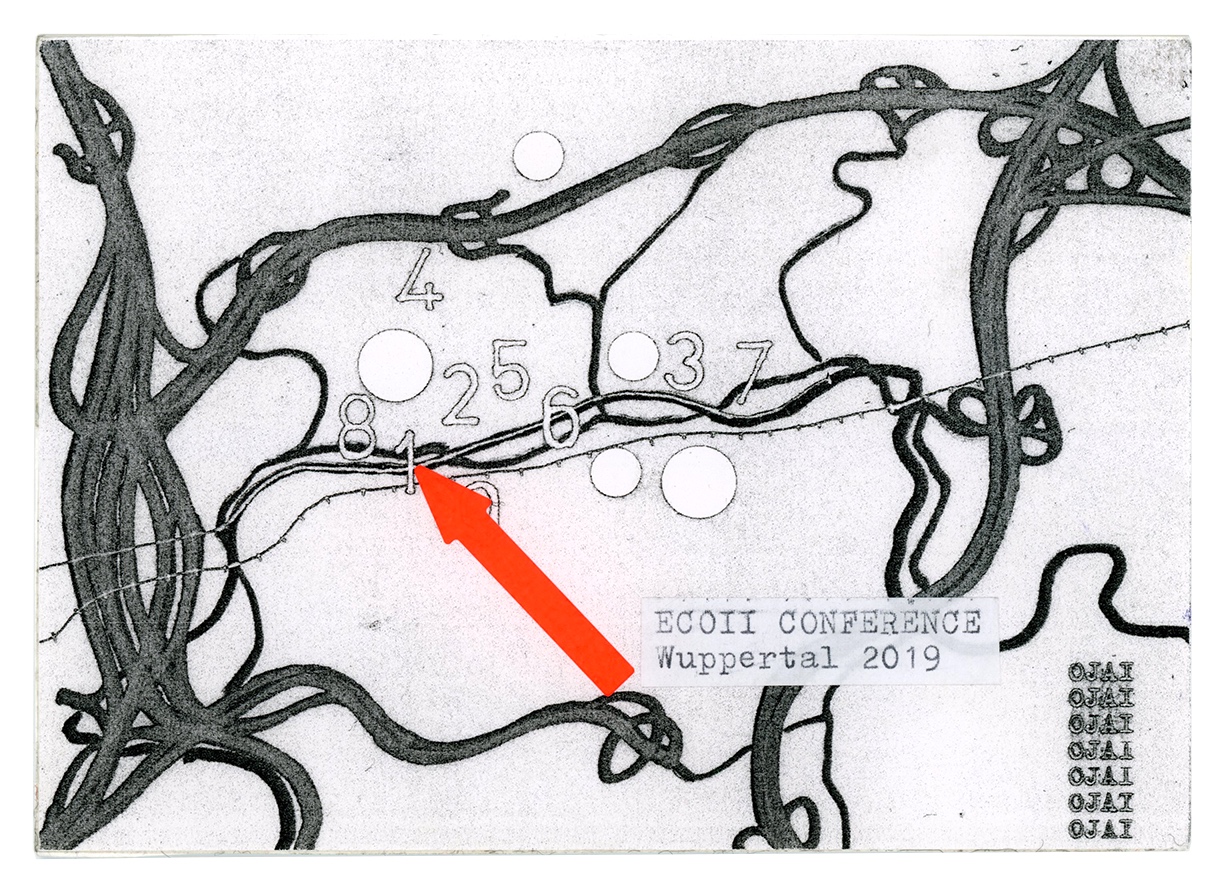
GRÖLLE pass:projects
143 Friedrich-Ebert-Straße
42117 Wuppertal
Germany
Schwebebahn: Pestalozzistraße
